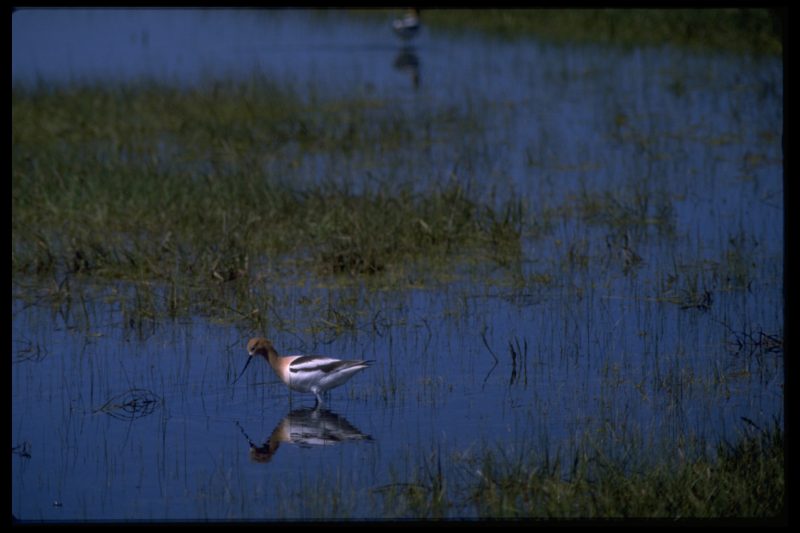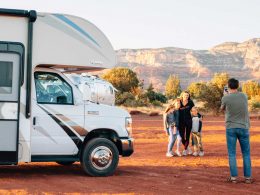The Malheur National Wildlife Refuge may be a familiar name to you, but unfortunately not because of the beautiful scenery. It was the site of one of the most dramatic showdowns over public land in American history.
Read on as we take a closer look at the events that made Malheur a household name.
What Happened at Malheur National Wildlife Refuge?
In early 2016, Malheur National Wildlife Refuge became the center of a dispute over America’s public lands and the rights of farmers and other rural landowners to use them. A group of far-right militiamen and protestors seized the refuge headquarters. They demanded the federal government release two local ranchers convicted of setting fires on public land and relinquish control of the refuge.
What is Malheur National Wildlife Refuge?
Malheur National Wildlife Refuge is protected public land located in southeastern Oregon’s portion of the Northern Basin and Range. In 1908, President Theodore Roosevelt established it as “a preserve and breeding ground for native birds.” The Civilian Conservation Corps, a program from the Great Depression, built much of the refuge’s infrastructure. Today, it encompasses nearly 190,000 acres centered around the Malheur, Mud, and Harney lakes.
Like many national wildlife refuges, Malheur offers recreational opportunities. The area is well-known for excellent birdwatching and photography opportunities. Hunters and fishers can also take advantage of certain areas of the refuge.
What Started the Occupation of the Malheur National Wildlife Refuge?
Following a peaceful demonstration in the nearby town of Burns, Ore., a small group of armed extremists drove to the headquarters of Malheur National Wildlife Refuge. There, they seized control of the headquarters building.
The protest had centered on the case of the Hammonds, local ranchers convicted of arson in 2012. Prosecutors accused them of burning nearly 140 acres of public land to cover up an illegal hunt. The conviction followed decades of clashes between the Hammond family and the federal government.
The group occupying the refuge called themselves “Citizens for Constitutional Freedom.” They demanded the release of the Hammonds and the end of federal control of the Malheur National Forest. Ammon Bundy, the son of a Nevada rancher who made headlines in 2014 for an armed standoff with federal agents near his ranch, led the group.
The Bundys repeatedly allowed their cattle to graze on federal lands without a permit. As a result, the feds confiscated their cattle, leading to the standoff. After hundreds of sometimes-armed protestors showed up to support the Bundy family, federal agents returned the family’s livestock without receiving any grazing fees.
The initial occupation was non-violent. Weeks of tense negotiations with the FBI and occasional clashes with locals followed. The tension came to a head on Jan. 26 when a group of occupiers left the refuge to attend a local town hall meeting. Police and federal agents attempted to stop the two cars, which led to a high-speed chase. After crashing while trying to evade a roadblock, occupier LaVoy Finicum exited the vehicle with a gun and was shot and killed by police.
The incident led to the arrest of more than 10 people, including Ammon Bundy. Still, the occupation continued for more than two weeks after this incident.
How Long Did the Siege Last?
The standoff at Malheur began on Jan. 2, 2016, and lasted for more than a month. It finally resolved on Feb. 11 after a 41-day occupation.
How Did the Oregon Standoff End?
By about a week after the chase on Jan. 26, a total of 16 occupiers had been arrested and indicted. By Feb. 10, just four people remained at Malheur. Following increased pressure from the FBI and other law enforcement, the four agreed to surrender the following day. The standoff officially ended on Feb. 11 when 27-year-old David Fry became the final occupier to leave the refuge.
What Has Been the Lasting Impact on the Reserve?
While Malheur National Wildlife Refuge is vast and most of the area remained untouched during the occupation, there was significant damage in and around the headquarters. Malheur remained closed for more than a year afterward.
Repairs to the refuge included repairing fences, removing sewage trenches dug by occupiers, and deep cleaning the headquarters. Additionally, occupiers damaged the refuge’s valuable archaeological heritage. In total, the Pacific Region Fish and Wildlife Service estimates restoration efforts cost $2 million.
The refuge also suffered damage to the delicate ecosystems it contains. The occupation took place during a planned removal time for carp, an invasive species. The failure to remove the carp allowed their numbers to grow unexpectedly, a problem that took several years to fix.
Is It Safe to Visit Malheur National Wildlife Refuge?
Visiting Malheur National Wildlife Refuge is generally very safe. Since the occupation in 2016, there have been no similar issues. Beyond basic precautions, there’s nothing you’ll need to be safe there.
Is Visiting and Camping on Public Lands Safe?
Yes! In most cases, you should have minimal safety concerns while on public lands. As with any camping, you’ll need to ensure you follow basic safety precautions and stay aware of your surroundings. But millions of people camp on and visit public land every year, and very few run into any sort of safety issues.
Still, public lands are vast, and it’s better to be safe than sorry. If you have any safety concerns while camping or visiting, pick up and move elsewhere. You’ll probably sleep better that way.
These days, life at Malheur has returned to the quiet state it enjoyed before the occupation. But the incident forever cemented the refuge as part of a complex debate over public lands, the role of the federal government, and the rights and traditions of residents. While the events of 2016 loom large, they shouldn’t completely overshadow this beautiful, unique place and the wildlife it protects.
If You Want the Latest Travel News, Join Our Mailing List
Don’t rely on biased RV industry news sources to keep you informed. Stick with Nomadic News. We publish articles and breaking stories that matter to you every weekday.










